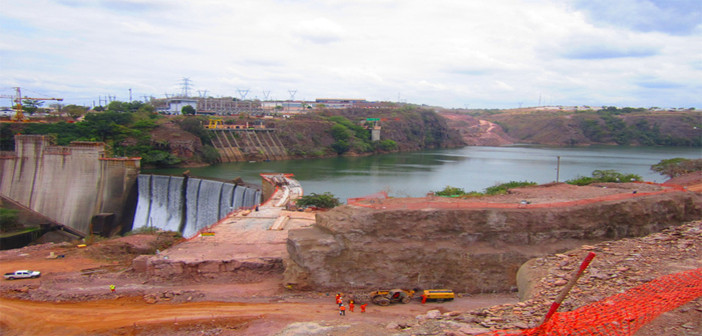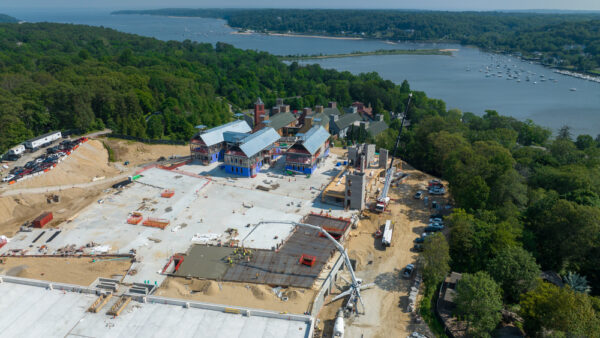The Industrial and Commercial Bank of China (ICBC) has granted a loan of $4.5bn to Angola to finance the construction of the Caculo Cabaça dam, the largest power project in Angolan history.
The agreement was signed in Beijing on 29 November by Archer Mangueira, Anglola’s finance minister.
The dam will be built on the Kwanza River in the northwest of the country, and when complete will have a generating capacity of just under 2.2GW. At present the entire country has a capacity of about 1.5GW.
The addition will be a step towards the government’s target of building 9GW of capacity by 2025, and will allow it to export power to neighbouring countries such as Namibia and South Africa.

Render of the hydroelectric dam on the Kwanza River, Angola (China Gezhouba Group Corporation/chinapower.com.cn)
João Baptista Borges, Angola’s minister of energy, said of the project: “It is extremely important from the perspective of industrial development of the country and regional integration. We cannot forget that we are in a region where our country is one of the more primary energy resources available, especially water.”
The dam will be constructed by a joint venture comprising China Gezhouba Group Corporation, Boreal Investments, and Niara-Holding. The contract, awarded by the Angolan government and valued at $4.5bn, was signed in June 2015.
Work is expected to take 80 months to complete.
Hydroelectric plants generate more than two-thirds of Angola’s electricity. There are already two dams on the Kwanza, the 180MW Cambambe Power Station and the 130MW Capanda Dam (pictured), completed in 2007 by Russian contractor Tekhnopromexport.
Top image: The Capanda, one of the existing dams on the Kwanza (Eribeto/Creative Commons)
Comments
Comments are closed.







The installed capacity in Capanda is not 130 MW but rather 4*130=520 MW.
Notwithstanding the real important available hydro resources of the Kwanza river it must be taken into account that the new plant will be situated in the northern area of Angola so that the export possibilities of energy to Namíbia and South Africa will require additional $bn for the VHV transmission lines (or even DC link) which will have to cross from North to South nearly the whole Angola territory.
Furthermore the existing Northern, Central and Southern electric Systems (which run from East to West) are not yet properly interconnected.
Finally the development of an important VHV Transmission system will require the launching of a well-equipped (hardware and software) Central Dispatching Center, probably in Luanda, the formation and training of a strong team of specialised personnel and the installation of a good and extensive Telecom and Information system linking main power plants and substations with the Dispatching Center.